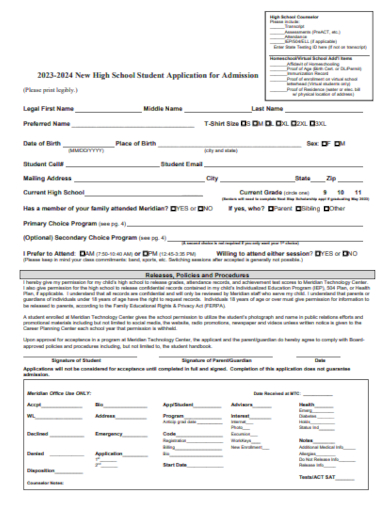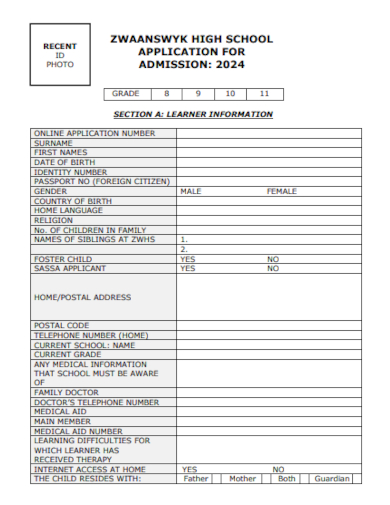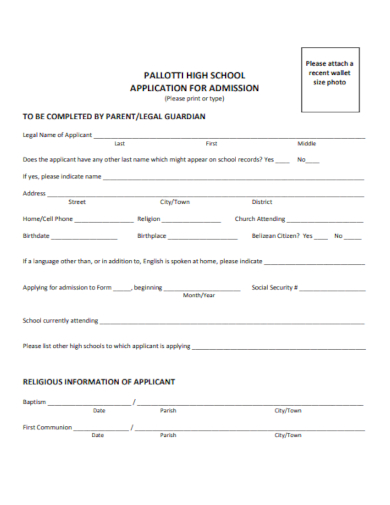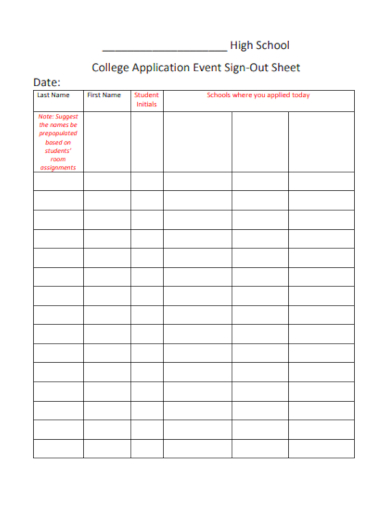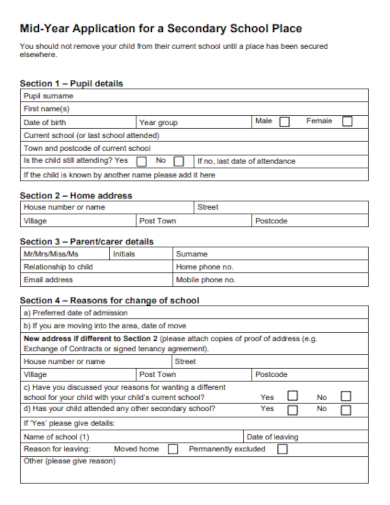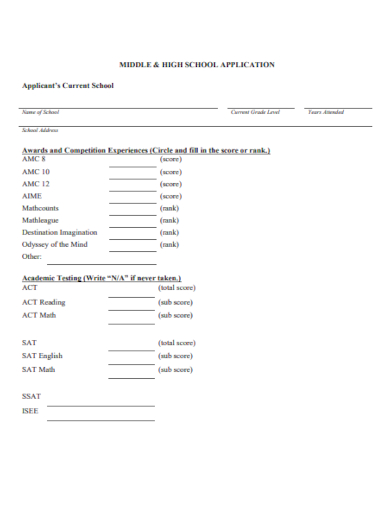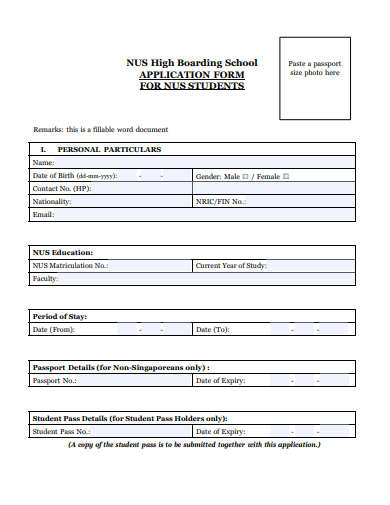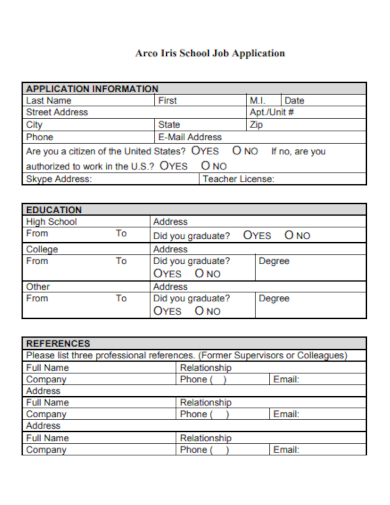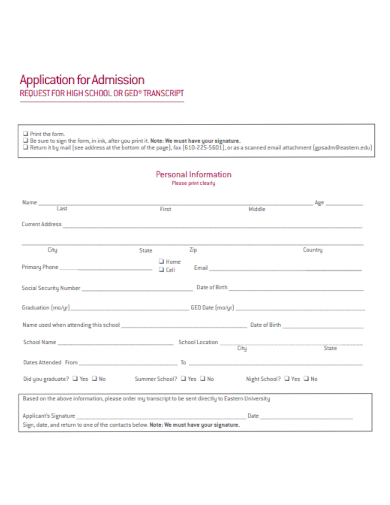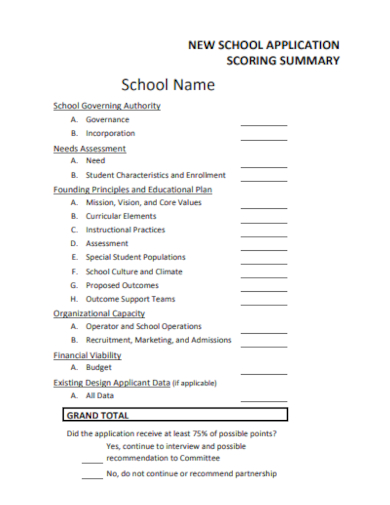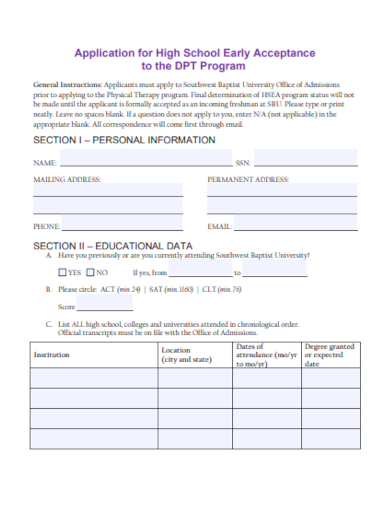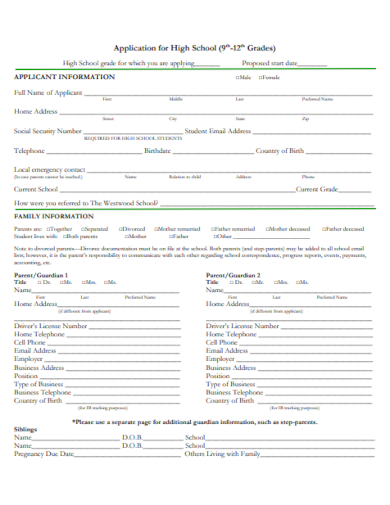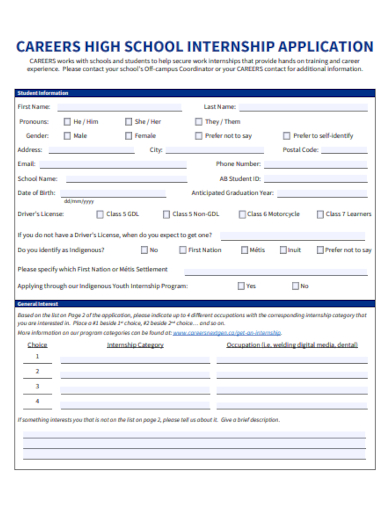Kickstart your academic journey with our comprehensive Sample High School Application Form Template! Designed for ease and clarity, this application form is the gateway to one of the most renowned high schools. Whether you’re an eager student or a dedicated parent, navigating the application process has never been simpler. Leverage this template to ensure you’re well-prepared and ahead of the curve, standing out in the quest for quality education. Dive in and shape your educational future today!
20+ High School Application Forms
1. High School Application Form
2. High School Student Application
3. Sample High School Application
4. High School Application Essay
5. High School Application for Admission
6. High School College Application
7. Secondary School Application
High School Application Forms: Your Gateway to Academic Opportunities
High school application forms are crucial tools used by secondary educational institutions to gather essential information about prospective students. These forms serve multiple purposes, from administrative documentation to assessing an applicant’s suitability for a school program. For students and parents, understanding the significance and nuances of these forms can be instrumental in ensuring a smoother transition to the next phase of academic life.
Purpose and Importance
Information Collection: At the most basic level, these forms collect personal information such as the student’s name, date of birth, contact details, and previous educational background. This helps schools maintain updated records for all applicants.
Eligibility Check: Most high schools have specific criteria for admission, such as age limits or prerequisite courses. The application form helps determine whether the student meets these criteria.
Skills and Interests Assessment: Some forms may ask students about their hobbies, extracurricular activities, or academic interests. This assists schools in understanding the student’s profile better, potentially influencing class placements or extracurricular recommendations.
Previous Performance Evaluation: Academic records, recommendations, and sometimes even essays or personal statements are part of the application package. These components provide insights into a student’s past performance and predict their potential future achievements.
Streamlining the Admissions Process: Application forms help standardize the admissions procedure, ensuring that each student is evaluated using the same criteria, making the process fair and organized.
Key Components
While the specifics of high school application forms can vary significantly based on the institution and its location, some common elements are universally present:
- Personal Details: Basic information like name, address, date of birth, and contact information.
- Educational History: Details of previous schools attended, grades obtained, and any notable academic achievements.
- Recommendations: Many schools require letters of recommendation from previous teachers or school administrators. These provide an external perspective on the student’s abilities and character.
- Personal Statement or Essay: Some high schools may ask students to write an essay or personal statement. This is an opportunity for students to express their aspirations, motivations, and reasons for applying to that particular school.
- Extracurricular Activities: A section dedicated to the student’s non-academic pursuits can highlight skills like leadership, teamwork, and dedication.
- Declaration and Consent: Most forms will have a section where the applicant, and often their guardians, must sign, indicating that the information provided is accurate.
The Digital Age and Application Forms
With the advent of the digital age, many high schools have transitioned from paper-based application forms to online submission portals. This shift has made the application process more efficient, environmentally friendly, and accessible. Digital platforms often provide real-time updates on application status, instant receipt acknowledgments, and easier document uploading.
High school application forms are more than just bureaucratic necessities; they’re a student’s first formal introduction to a new academic institution. While they may seem daunting at first, understanding their purpose and components can demystify the process. It’s essential to approach them with care, ensuring that all information provided is accurate and reflective of the student’s genuine abilities and aspirations. In the competitive world of academic admissions, a well-completed application form can make all the difference.
8. Middle School Application
9. Private High School Application
10. High Boarding School Application
11. High School Scholarship Application
12. High School Job Application
13. Request for High School Application
14. New School Application Template
15. High School Transfer Application
The Diverse Landscape of School Application Forms
School application forms are essential instruments in the educational sphere, facilitating student enrollment across various educational stages and specializations. The design and content of these forms can vary widely based on the school’s type, level, and specific needs. Understanding the different types of school application forms can be instrumental for both parents and students as they navigate the educational landscape.
Preschool and Kindergarten Application Forms:
These are typically the first forms a child’s parents or guardians will encounter in the formal education journey. They usually focus on basic information such as the child’s name, date of birth, and emergency contact details. Some might ask about the child’s basic skills, allergies, or special needs to ensure the school is equipped to cater to the child appropriately.
Elementary and Middle School Application Forms:
These forms delve deeper into a child’s educational history. While still collecting basic personal information, they also request details about previous schools attended, academic performance, and often, behavioral assessments. These forms might also include sections about the child’s hobbies or extracurricular activities.
High School Application Forms:
Arguably more intensive, these forms play a pivotal role in shaping a student’s academic future. They typically require detailed academic records, extracurricular achievements, letters of recommendation, and sometimes essays or personal statements. High schools, being more specialized, may also ask about a student’s future aspirations or areas of interest.
Special Education Application Forms:
Designed for students with unique learning needs, these forms gather detailed information about a student’s specific requirements, previous interventions or supports, medical or psychological assessments, and recommendations from specialists. The goal is to ensure that the school can provide an appropriate and supportive learning environment.
Charter and Magnet School Application Forms:
Charter and magnet schools often have specialized curricula or themes, and their application forms reflect these specialties. Apart from academic records, they might have sections dedicated to the student’s aptitude or interest in the school’s specific focus area.
Boarding School Application Forms:
These forms are comprehensive, combining academic interests with details about a student’s personal life, given that the student will live on campus. They might ask about dietary preferences, health history, guardians’ contact information, and more.
Scholarship and Financial Aid Application Forms:
While not strictly enrollment forms, these are crucial for many families. They require detailed information about a student’s academic achievements and the family’s financial situation to determine eligibility for financial assistance.
Extracurricular and Sports Application Forms:
Schools offering specialized programs in arts, sports, or other areas might have separate application forms to assess a student’s skills, training, and achievements in these fields.
Summer School and Camp Application Forms:
For programs running during the summer break, these forms collect information about students’ interests in specific subjects, any previous courses taken, and often, emergency contact and health details.
The world of school application forms is varied and expansive, reflecting the diverse needs and specialties of educational institutions. While the application process can seem overwhelming, understanding the nuances of different forms can simplify the journey. With every form acting as a passport to a new educational opportunity, it’s crucial to approach each with care and attention.
16. High School Acceptance Application
17. High School Enrollment Application
18. High School Information Application
19. High School Online Application
20. High School Application Format
21. High School Internship Application
Understanding the High School Application Form
Personal Details: A Gateway to Identity
A high school application typically starts by gathering foundational information about the student. This includes the applicant’s full name, date of birth, gender, nationality, and relevant contact details, such as an address, phone number, and email. Furthermore, to get a better understanding of the student’s background, details regarding the parents or guardians, including their education and profession, may also be solicited.
The Significance of a Passport Photograph
Though it might seem like a minor detail, the inclusion of a recent passport-sized photograph serves multiple purposes. Apart from facilitating identification, it plays a role in administrative record-keeping and ensures that there’s a visual record associated with each application.
Diving Deep: Academic Background
This section is pivotal as it traces the student’s academic journey up to that point. Information regarding the schools the student has attended, the duration of each attendance, and any standout academic achievements or awards forms the core of this section. It provides schools a clear trajectory of the student’s educational progress and achievements.
The Power of Endorsement: Letters of Recommendation
An external perspective often provides a more rounded view of the student. Letters of recommendation, ideally from past teachers, counselors, or school administrators, offer insights into the student’s character, work ethic, and capabilities. These letters act as testimonials, validating the claims made by the student in the application.
The World Beyond Academics: Extracurricular Involvement
Schools are always on the lookout for well-rounded individuals. A dedicated section highlighting extracurricular engagements helps in achieving this understanding. Participation in sports, arts, music, clubs, or any community service endeavors showcases a student’s interests and passions outside the realm of textbooks.
A Glimpse into the Soul: Personal Statement or Essay
This narrative section allows students to put forth their voice. Whether it’s detailing their motivation behind choosing a specific high school, elucidating on their long-term aspirations, or sharing personal anecdotes that have shaped their world view, this personal essay or statement offers a deeper dive into the student’s psyche.
Benchmarking with Numbers: Standardized Test Scores
For schools that prioritize quantitative assessment, this section comes into play. If the school relies on standardized tests for admissions, students need to provide their scores, offering a standardized measure of their academic abilities.
Ensuring Inclusivity: Special Considerations
Every student is unique, with some requiring specific attention or accommodations. This section is designed for detailing any special needs, learning disabilities, or specific accommodations the student might have had in the past, ensuring the school can cater to them effectively.
Affirming Integrity: Declarations and Consent
A crucial aspect of any formal document, the declaration section requires applicants (and often their guardians, if underage) to affirm the authenticity of the provided information. It often includes clauses that allow the school to verify details if necessary.
Tackling the Formalities: Application Fee Details
Education often carries associated costs. If the institution charges an application fee, this section will detail the exact amount and the acceptable modes of payment, ensuring transparency in financial transactions.
A Showcase of Talents: Supplementary Materials
Certain schools might have a particular focus or niche, prompting them to request additional materials. This could range from portfolios for art-centric schools, samples of written work, to certificates from specialized courses or workshops.
The Final Step: Submission Checklist
To guide applicants toward a smooth submission process, many application forms conclude with a checklist. This ensures that students have ticked off all requirements, enhancing the completeness and accuracy of the application.
In essence, a high school application form acts as a comprehensive window into a student’s academic history, personal journey, and future aspirations. By understanding and addressing each segment meticulously, both schools and students can ensure a mutually beneficial admissions process.
Related Posts
FREE 17+ Referral Application Samples in MS Word | PDF
FREE 14+ Admission Application Samples in MS Word | Apple Pages | PDF
FREE 20+ University Application Samples in MS Word | Google Docs | PDF
FREE 21+ Administrative Application Samples in MS Word | Apple Pages | PDF
FREE 21+ Teacher Application Samples in MS Word | Apple Pages | Outlook | PDF
FREE 25+ Transfer Application Samples in MS Word | Apple Pages | PDF
FREE 23+ Participation Application Samples in MS Word | PDF
FREE 14+ Patient Application Samples in MS Word | PDF
FREE 21+ Eligibility Application Samples in PDF
FREE 20+ Travel Application Samples in PDF | MS Word
FREE 25+ Sponsor Application Sampales in MS Word | Google Docs | Apple Pages | PDF
FREE 23+ Candidate Application Samples in PDF
FREE 33+ Committee Application Samples in PDF | MS Word
FREE 37+ Supplemental Application Samples in PDF | MS Word
FREE 37+ Product Application Samples in PDF | MS Word


